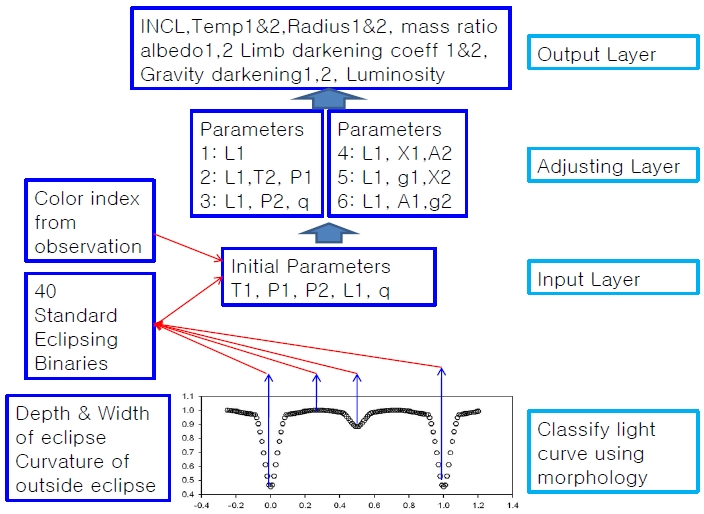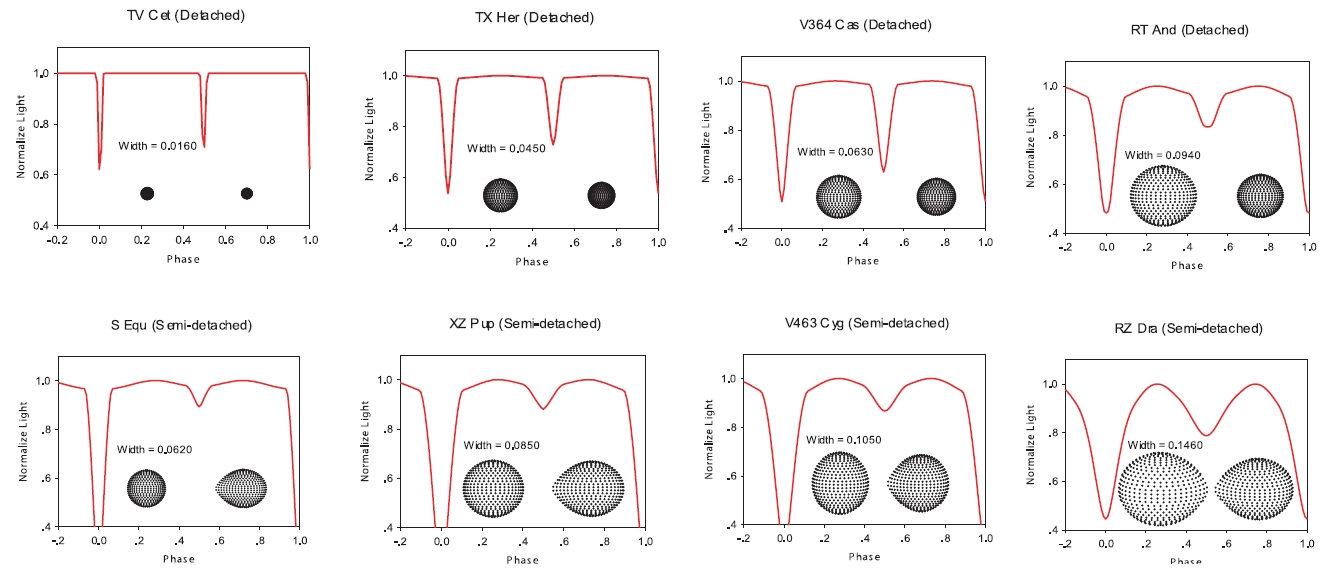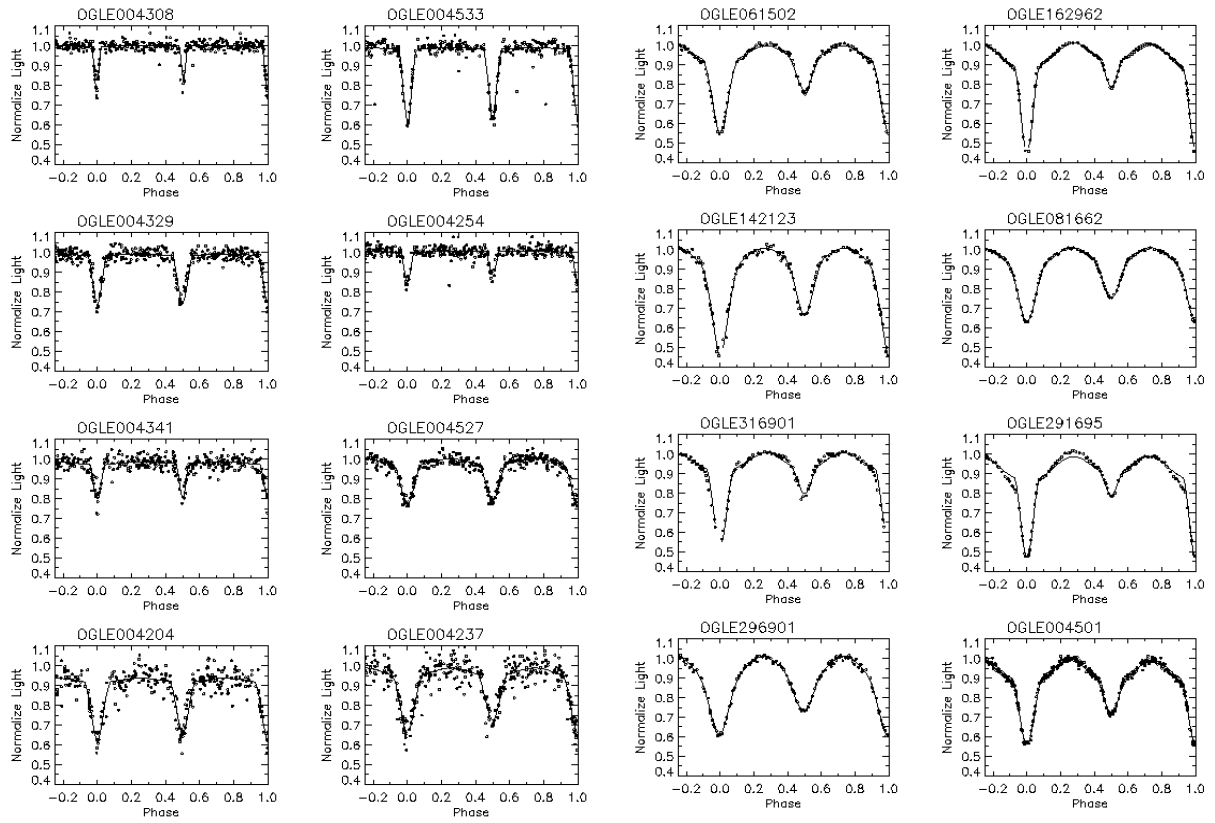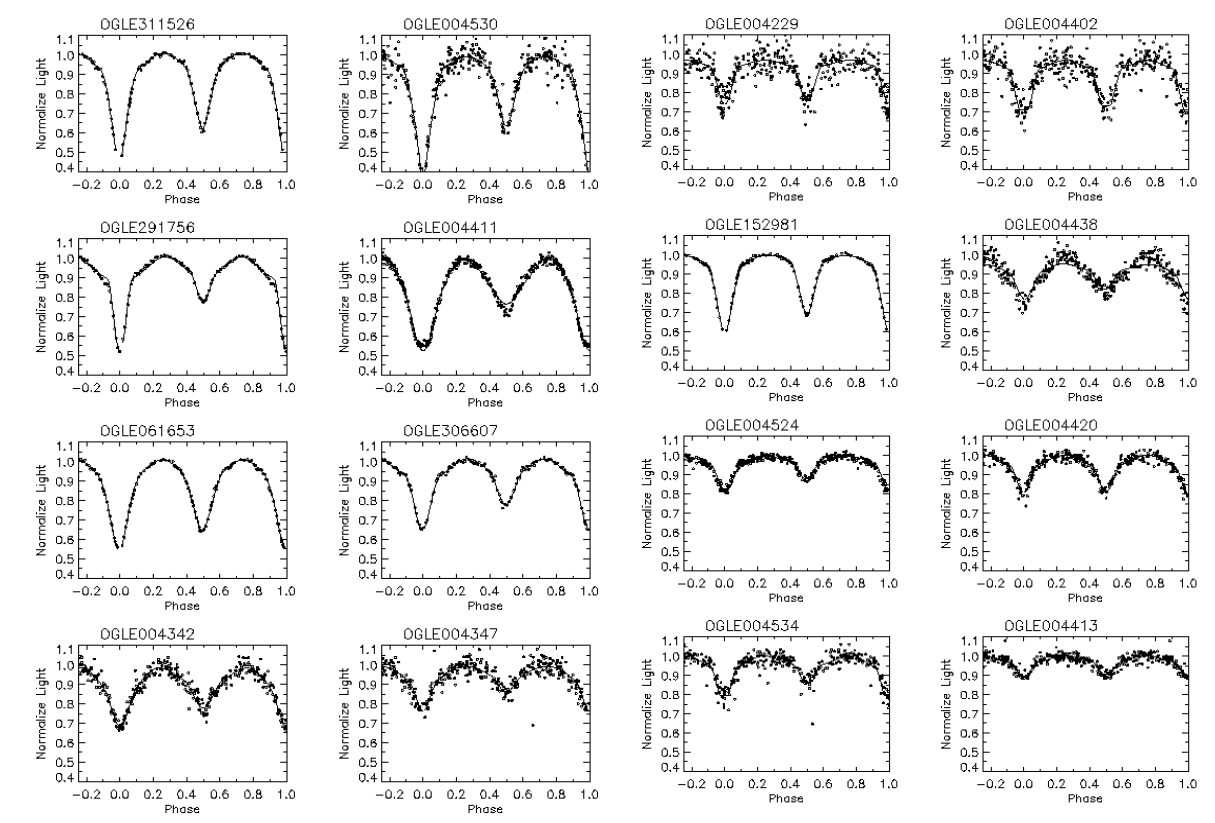



Eclipsing binary stars have been discovered since the Algol was recognized as an eclipsing binary. Up to 1990 approximately 4,000 eclipsing binaries including 3,546 binary systems listed in "A Finding List for Observers of Interacting Binary Stars" (Wood et al. 1980) have been discovered in our Galaxy. Approximately 465 eclipsing binaries were discovered in the direction of the galactic center at the beginning of the optical gravitational lensing experiment (OGLE) (Udalski et al. 1997) as a result of their dark matter searches using gravitational micro-lensing effects. Even if a large number of eclipsing binaries have been discovered in the Galaxy, analysis of the light curves has not been carried out for last 15 years. Approximately only 400 of 5,000 eclipsing binaries have been analyzed using their light curves and radial velocity curves. It is also quite a surprise that the data for the light curves and radial velocity curves of around only 200 eclipsing binaries are available in public domain.
The existence of eclipsing binaries in nearby galaxies such as the Large and Small Magellan Clouds (LMC and SMC) and the Andromeda Galaxy (M31) has been known from photographic photometry for several decades. Nearly 200 eclipsing binaries had been identified up to 1,990 chiefly from their photographic light curves. Large survey observations of eclipsing binaries in the LMC and SMC had been carried out by several groups. The major surveys yielding light curves of the eclipsing binary stars in the LMC include EROS project (Grison et al. 1995), MACHO project (Alcock et al. 1997a), and OGLE project (Wyrzykowski et al. 2003). The EROS project provided a catalogue of 79 certain or probable eclipsing binary stars in the central bar of the LMC. The MACHO project reported light curves for 611 eclipsing binary stars in the LMC (Alcock et al. 1997b). Wyrzykowski et al. (2004) presented light curves of approximately 1,300 eclipsing binary stars detected in the SMC, collected from 1997 to 2000. Each eclipsing binary star was classified according to the traditional scheme of the General Catalogue of Variable Stars.
Future missions such as the Large Synoptic Survey Telescope (LSST), the Panoramic Survey Telescope and Rapid Response System (Pan-STARRS) and Gaia are expected to yield hundreds thousands of new variable stars and eclipsing binaries.
One of goals of the eclipsing binary star research is to determine the physical parameters, such as masses, radii, temperatures, and luminosities of the component stars (Kang et al. 2009). The analysis of the radial velocity curves and light curves for the eclipsing binaries provides absolute dimensions of the stars in MKS units, regardless of the distances of the binaries from us. The luminosity of the stars in the eclipsing binaries are determined directly so that the eclipsing binary stars can be used as excellent standard candles for distance determinations among nearby galaxies.
The analysis of the light curves requires photometric knowledge and complicate geometry while the analysis of the radial velocity curves is relatively simple. For the light curve analysis, several investigators have published the methods for calculation of the model light curves (Kopal 1978, Russell & Merrill 1952, Wilson & Devinney 1971, Wood 1971) The Wilson and Devinny (WD) synthetic program has been updated continuously. Currently the 2005 version of the WD synthetic program is widely used for the analysis of light curves and radial velocity curves of the eclipsing binary stars. The WD synthetic program has been improved and expanded several times. It is still time consuming and need well experienced personal touch to get the best solution. That is why large number of light curves of eclipsing binaries newly discovered in extra galaxies have not been analyzed.
2. READY MADE SUIT VERSUS TAILOR MADE SUIT
In order to analyze the large number of light curves produced by the survey observations, we need to improve the method for the analysis of light curve and radial velocity curves. Kang (2008) suggested a new method of light curve analysis using standard eclipsing binaries for the semi-detached systems. Prsa et al. (2008) and Guinan et al. (2009) introduced the Eclipsing Binaries with Artificial Intelligence (EBAI) project that aims to provide estimates of principal parameters for thousand of eclipsing binaries.
In order to treat large number of light curves, we applied the concept of "ready made suit" to light curve analysis. The conventional analysis of the light curve and radial velocity curve requires the photometric knowledge and complicate geometry. The well-known method of the light curve analysis is the WD differential correction method which has been used for last 40 years. It starts to adjust initial parameters by the method of differential correction until all parameters are converged. It takes usually a week to get best parameters. Of course skilled investigators need much shorter time. One of main reasons to takes a longer time is the initial parameters which are far away from the real parameters. Therefore the new method concentrated on how to estimate initial parameters of un-analyzed light curves. The light curves of approximately 400 eclipsing binaries in our Galaxy had been analyzed for photometric and spectroscopic solutions. This 400 binary systems can provide the values of parameters for various types of eclipsing binaries. It is the same as that the designer of the ready made suit can make all size of suits using the various sample size measurements.
The main procedure of the new method, whose schematic chart is plotted in Fig. 1, is described as below.
2.1 Standard eclipsing binary systems (SEB)
We have collected original data of the light curves and radial velocity curves of approximately 40 eclipsing binary stars. We defined the standard eclipsing binary star as an eclipsing binary star whose multi-color light curves and double line radial velocity curves were published in good quality. We re-analyzed all light curves and radial velocity curves of SEBs using the 2005 version of the WD differential correction program. Therefore we could estimate homogeneous photometric and spectroscopic solutions as well as absolute dimension and distance of each binary system. The 40 eclipsing binaries will be used as standard eclipsing binaries. The parameters of one of 40 standard eclipsing binaries will used as initial parameters of a target eclipsing binaries. The light curves are plotted with Roche configurations of only 8 standard detached and semi-detached eclipsing binary systems in Fig. 2.
2.2 Determination of initial parameters
A morphology of light curves can be characterized by depth and width of the primary eclipse and curvature of outside eclipse. We measure the depth, width, and curvature of the representative observed light curve (usually light curve among multi-color light curves). Then we select best similar light curve among the standard eclipsing binaries using the three measurements. We use parameters of the selected standard eclipsing binary star as initial parameters.
2.3 Adjustment of parameters by iteration
We modified the 2005 version of the WD program to run by iterations. We tested modes 2, and 5 only in this time. First we adopted theoretical values for initial values of limb darkening coefficients, albedos, gravity darkening exponents. Then we adjusted only L1 to adjust level of light curves. Then adjusted set of (
3. APPLYING TO LIGHT CURVES OF ECLIPSING BINARIES IN THE SMC
The OGLE project (Wyrzykowski et al. 2003) produced I light curves of approximately 1,300 eclipsing binaries observed between 1997 and 2000 in the Small Magellan Cloud. They made B and V observations during outside eclipse in order to determine the temperatures of the binary systems. We selected 100 detached and semi-detached light curves of the 1,300 eclipsing binary stars for testing the new method. We have analyzed the radial velocity curves first because the double line radial velocity curves give us an unique mass ratio of the binary system. The temperature of the binary system is the only parameter that is determined from the photometric observations while other parameters are adjusted by fitting observations to the model light curves. Therefore we first calculated
Approximately 30 percent of 100 light curves were not run correctly because some parameters were diverged during the iteration. The following is a summary of main causes to diverge the parameters;
Our iteration program did not take care of eccentric orbit where the secondary minimum does not appear on the phase of 0.5 because computer running time for the eccentric orbit is much longer than that of circular orbit. We plan to include the eccentricity as an adjustable parameter later.
The potential of a star should be larger than its outer critical potential. However the potential of the star was adjusted to smaller value than the outer critical potential for some contact binaries during the iteration.
4.3 Limb darkening coefficients
In order to improve the fitness in detail especially the limb darkening coefficients converge to negative value in some cases.
We noted three major causes to diverge the parameters during the iteration. In order to avoid the three causes, first we plan to add eccentricity of the orbit as an adjustable parameter. Second, we plan to adopt the subset adjustment the same as the WD program did. Therefore we can expect to choose better value of the potential during the iteration. Third, we plan to adjust the limb darkening coefficients when most other parameters were adjusted in order to avoid the negative coefficients in the future work. The iteration program will be also extended for contact and near contact binaries. Then we can expect to analyze light curves of a couple hundred eclipsing binaries within 1-2 weeks.
This work was funded by the Astrophysical Research Center of the Structure and Evolution of the Cosmos (ARCSEC), which is supported by the National Research Foundation of Korea and Sejong University research fund.



